Should I Get A Dsl Or Mirrorless Camera
When it comes to capturing high quality images, people tend to gravitate towards either a DSLR photographic camera or a mirrorless photographic camera. Canon'south DSLR range is known as EOS DSLR cameras, and in mirrorless cameras Canon have two range options, EOS R and EOS One thousand—which we volition arrive to more than about that later on.
Both DSLR and mirrorless cameras use interchangeable lenses, which tin be swapped as needed. Both systems can capture very loftier quality images and mostly speaking, both systems also offer a caste of manual—as well every bit automated—command.
So how do you know which organisation is best for your photographic and videography needs? In that location are a few points to consider, and we'll pace through some of the main ones here:
Technical differences between a Mirrorless and a DSLR photographic camera
The term 'mirrorless' comes from the fact that the complex system of mirrors found in a DSLR is completely removed from the camera.
These mirrors are there to direct light coming through the lens, up and out through the viewfinder, so that the lensman can frame their shot.
The mirrors likewise directly low-cal on to the dedicated Motorcar Focus sensor, as well every bit the Auto Exposure sensor. This ways that y'all have a dedicated purpose-built component to control autofocus, and a purpose-built component to control auto exposure.
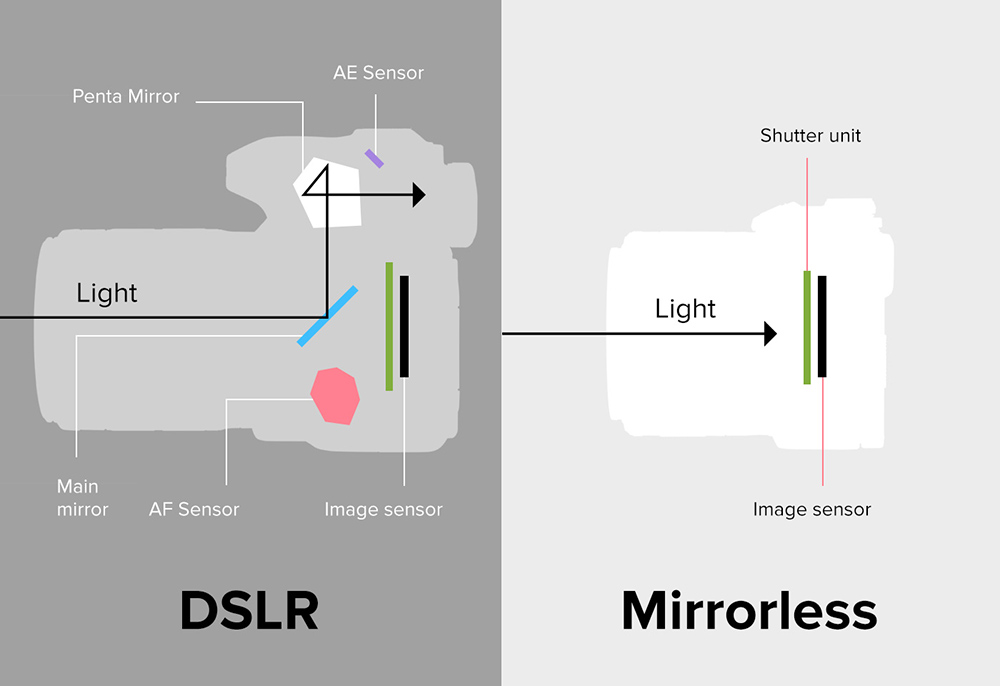
In a mirrorless camera, these components are removed, along with the mirror-box. By removing the mirrors, the camera becomes smaller and lighter even so this does nowadays a challenge, because a substitute for the Automobile Focus and Auto Exposure sensors needs to be institute. Mirrorless cameras give that job to the imaging sensor, meaning that information technology has to do multiple jobs.
Yous're probably wondering what the impacts of these technical differences are. Wonder no more!
Size and weight
Mirrorless cameras were created to achieve a smaller and lighter photographic camera, while still offering high quality images. In club to create the smallest camera possible, manufacturers analyse every component as a possible point of reduction. The components that have the greatest effect on overall size and weight are the imaging sensor and the lenses. With a smaller imaging sensor a photographic camera can take a smaller lens mountain, lenses, and body overall. On the flip side, larger imaging sensors mean everything has to be physically bigger.
The 2 about common sizes of imaging sensors are the Total Frame sensor and the APS-C sensor (sometimes referred to as a crop sensor). Canon's EOS DSLR range features cameras with either Full Frame or APS-C sized sensors. Generally speaking, a Full Frame camera will exist more than expensive than an APS-C camera as the imaging sensor is one of the well-nigh expensive components of the camera.
Catechism'south EOS M range of Mirrorless cameras offering a great remainder between size, weight, and value for money which is why they're in the sweet-spot for using our APS-C sized imaging sensor.
APS-C sensors are what nosotros use in all our entry to mid-range DSLR cameras—such as the EOS 90D—and now our EOS Thou Mirrorless range.
Catechism's EOS R series feature Full Frame and APS-C sensors. Whilst physically smaller than Full Frame DSLR cameras, the focus of developing cameras like the EOS R3, EOS R5 and EOS R6 was not about making smaller cameras, nonetheless with the introduction of the EOS R7 and EOS R10, the EOS R series has at present opened upwards new opportunity in mirrorless APS-C sensor cameras. The EOS R serial was born from the pursuit to make lenses which were non previously possible, delivering the highest quality images. Building on continuous EOS innovation, the EOS R system is adult around the revolutionary RF lens mount. It enables faster focusing speeds, better epitome quality, brighter lenses and improve communication betwixt the camera and lens.
Image Quality
Nosotros believe mirrorless cameras should offer the same quality as DSLR cameras, just in a smaller packet, hence the choice of either an APS-C sensor or a Total Frame sensor. Specifically, this ways great low light operation, image item, and color, also as shallow depth of field.
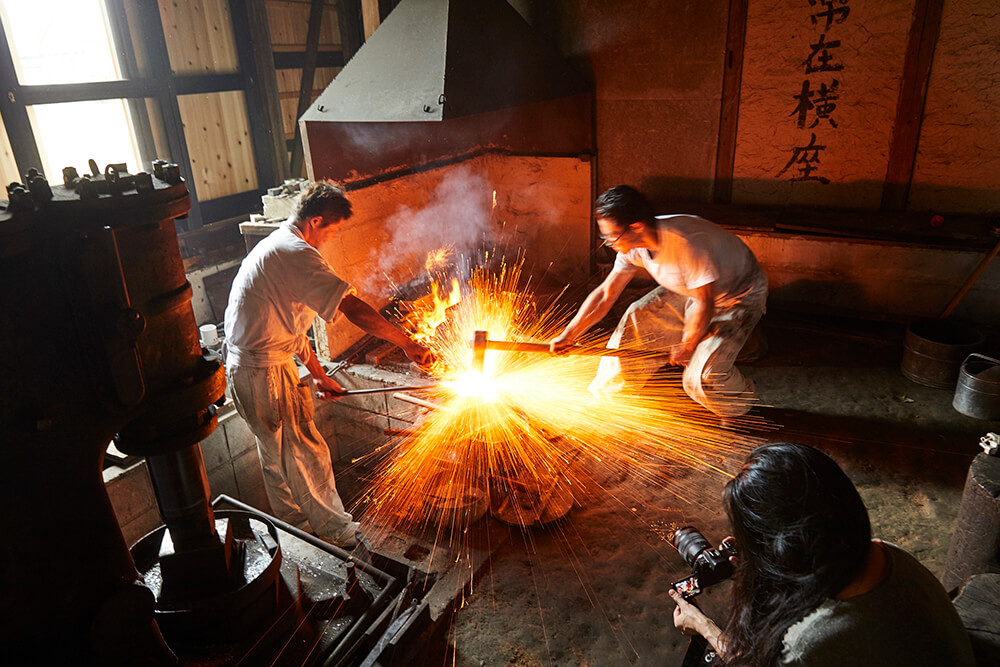
Camera performance
In use, the deviation between Mirrorless and DSLR cameras, stems mainly from how you lot frame your subject field.
For example, an EOS DSLR will always take an optical viewfinder, as well as an LCD screen. Canon Mirrorless cameras will ever have an LCD screen, but not necessarily a viewfinder. If at that place is a viewfinder it will exist an electronic viewfinder.
As you lot await through the viewfinder of a DSLR camera, you are seeing exactly what the lens sees, in existent fourth dimension, every bit the light is bounced up and out through the eyepiece. In a Mirrorless photographic camera, you lot look at what the imaging sensor is seeing, regardless of whether you are viewing information technology through the LCD screen, or an electronic viewfinder. Many photographers feel that the optical viewfinder featured on an EOS DSLR enables you lot to accept a closer affinity with your field of study and feels more responsive.
A Mirrorless camera shows you exactly what will exist captured; this 'what yous see is what you become' approach can requite you a improve thought of how the final image will expect. Significantly, this makes it easier to get to grips with operating the camera in transmission mode, as yous volition get a existent-time indication of how the exposure volition look. EOS DSLR cameras can also achieve this when operated in Live View mode using the LCD screen—giving you the best of both worlds.
Autofocus
Avant-garde algorithms in the dedicated Motorcar Focus system of an EOS DSLR can really rail a moving subject area, and volition be able to predict where information technology volition be in the separate second the shutter button is pressed. Even in loftier-speed shooting mode, the camera will constantly focus the subject. The premise backside this blazon of auto-focus—called Phase Detection—is that the camera knows exactly how far to move the focus mechanism in the lens—and in which direction—to achieve focus.
Catechism EOS R and EOS M Mirrorless cameras feature an advanced system call 'Dual Pixel CMOS AF', whereby every pixel acts as a phase detection sensor. This technology continues to advance and has considerably reduced the time it takes to focus, even in situations where the subject is moving.
Another thing to bear in heed with mirrorless cameras, and a characteristic of their reduced size, is that the batteries tend to have lower capacity. Of course this problem is solved past grabbing an actress battery from your favourite camera store.
Lens choice
No matter which Canon EOS camera you choose, you volition exist able to use over 80 Canon EF lenses. There is a huge range to choose from whether you are looking for a full general purpose zoom or travel lens, or shooting something more than specific such as portraits, landscapes, macro, sports or wildlife.
When choosing the right Canon lens for your Mirrorless photographic camera, you just need to be enlightened of a couple of things.
Firstly, the reason why most people choose an EOS M mirrorless camera, is because of their reduced size.
We've created the EF-Chiliad range of lenses built specifically for the smaller lens mount of EOS M serial cameras, they are the smallest lenses in the Canon range—but notwithstanding offer superb quality.
Canon'due south EOS R serial of Mirrorless cameras is built for a new lens range, the RF & RF-S series. Removing the mirror assembly from the camera design enables the RF & RF-S lenses to be placed closer to the imaging sensor which opens upwards new lens designs non previously possible. For example, the RF 28-70mm f/two.0L features an unprecedented f/ii.0 maximum aperture throughout the zoom range. The RF & RF-Southward serial is a growing range with currently over 28 lenses. Much like EF lenses, in that location are options to adapt your particular needs. Whether it be for landscape and travel, people and events, nature and action, macro and shut-ups or video and motion. The RF & RF-S lenses offer higher quality and speed with a operation organisation optimised for EOS R cameras and provide new levels of intuitive control.
Compatibility is a key focus across Canon'due south lens range. If you are moving to mirrorless from a Canon DSLR camera and wish to use your EF or EF-S lenses, yous will demand to buy a lens Adapter.
The lens adapter for EOS M cameras is called EF-EOS M, whilst at that place are three choices of lens adapter for the EOS R serial.
• EF-EOSR standard adapter
• EF-EOSR command ring adapter, featuring a lens command ring allowing intuitive choice of shutter speed, aperture or ISO
• EF-EOSR filter adapter, featuring either an ND or circular polarizing filter built in to the adapter
The good news is that if you've previously invested into other Canon lens ranges, a suitable lens adapter may let you to use it on your new camera. It also broadens your range of available lenses to choose from.
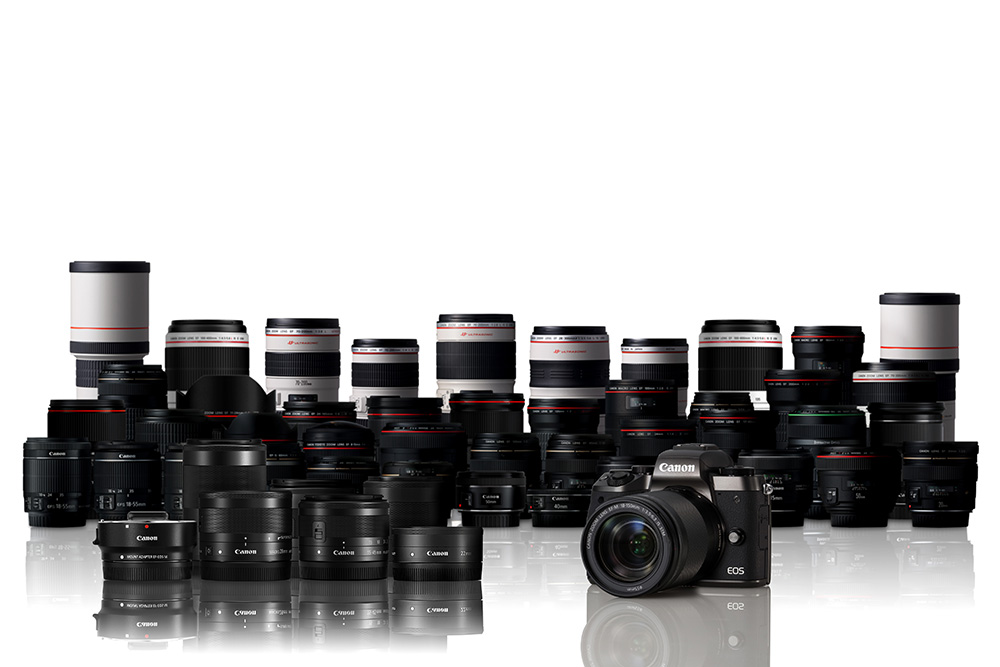
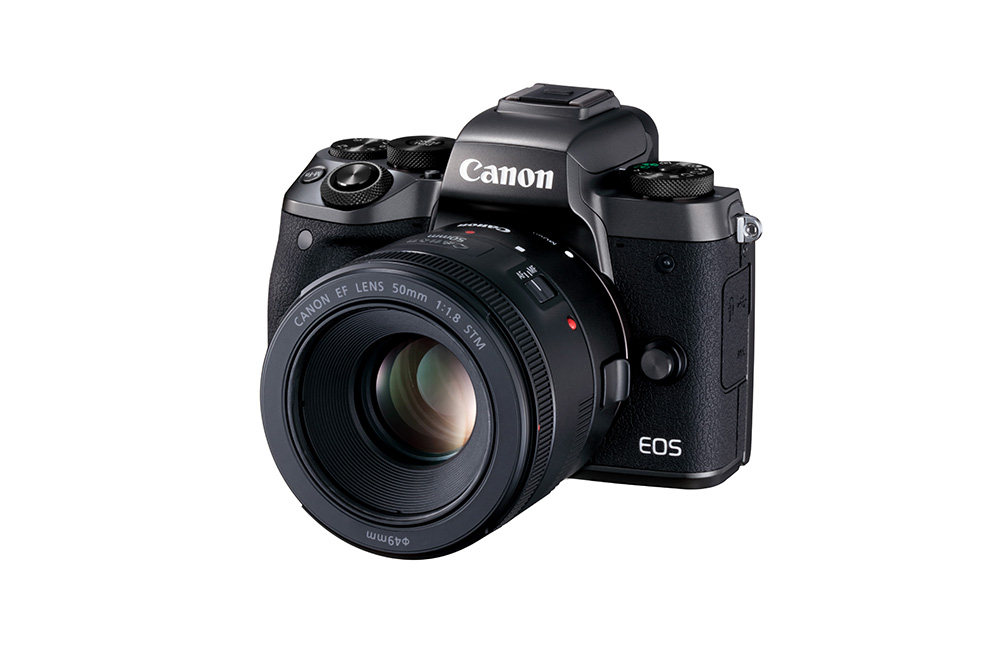
Video
To capture video on a Canon EOS DSLR, you demand to switch to Live View mode, and so focusing and tracking performance will offer a very similar experience to shooting with a Catechism EOS Mirrorless camera. The master consideration you should be aware of, is the type of car-focus system the camera uses. For example, newer EOS DSLR and Mirrorless cameras use 'Dual Pixel CMOS AF' which offers superb Motorcar Focus operation, a huge advancement from previous generations.
One advantage of Mirrorless cameras which feature Electronic viewfinders (EVF's) is that you lot can use the viewfinder whilst shooting video. In tricky lighting conditions this is often better than using the built in LCD screen. Unfortunately, you are unable to apply the Optical Viewfinder of a DSLR camera when shooting video.
Finally, you should also consider the oftentimes-overlooked field of study of sound capture. Canon EOS DSLR and Mirrorless models volition both be able to capture audio using the built-in microphone. For best performance however, you should recall nigh calculation an external microphone. This will do a better task, specially with spoken dialogue. Withal, you need to double check that your chosen camera has the required 3.5mm microphone port. The aforementioned goes for the headphone socket, which tin be used to monitor sound on the wing.
For more information to help you lot make up one's mind which photographic camera is right for you, click here.
Source: https://www.canon.com.au/get-inspired/mirrorless-or-dslr-cameras
Posted by: saucedamagning.blogspot.com

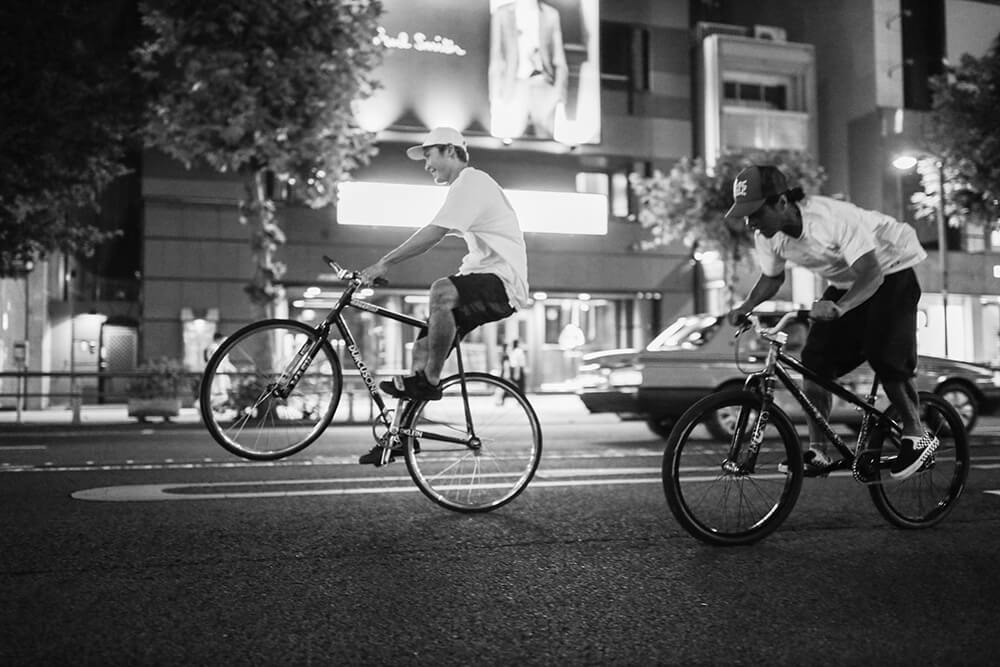
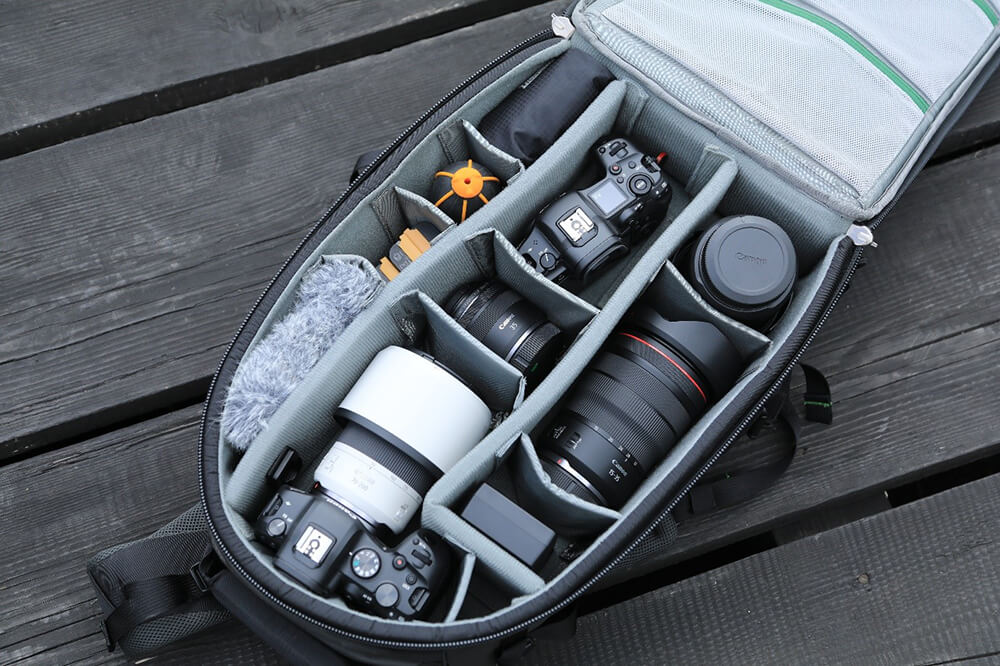
0 Response to "Should I Get A Dsl Or Mirrorless Camera"
Post a Comment